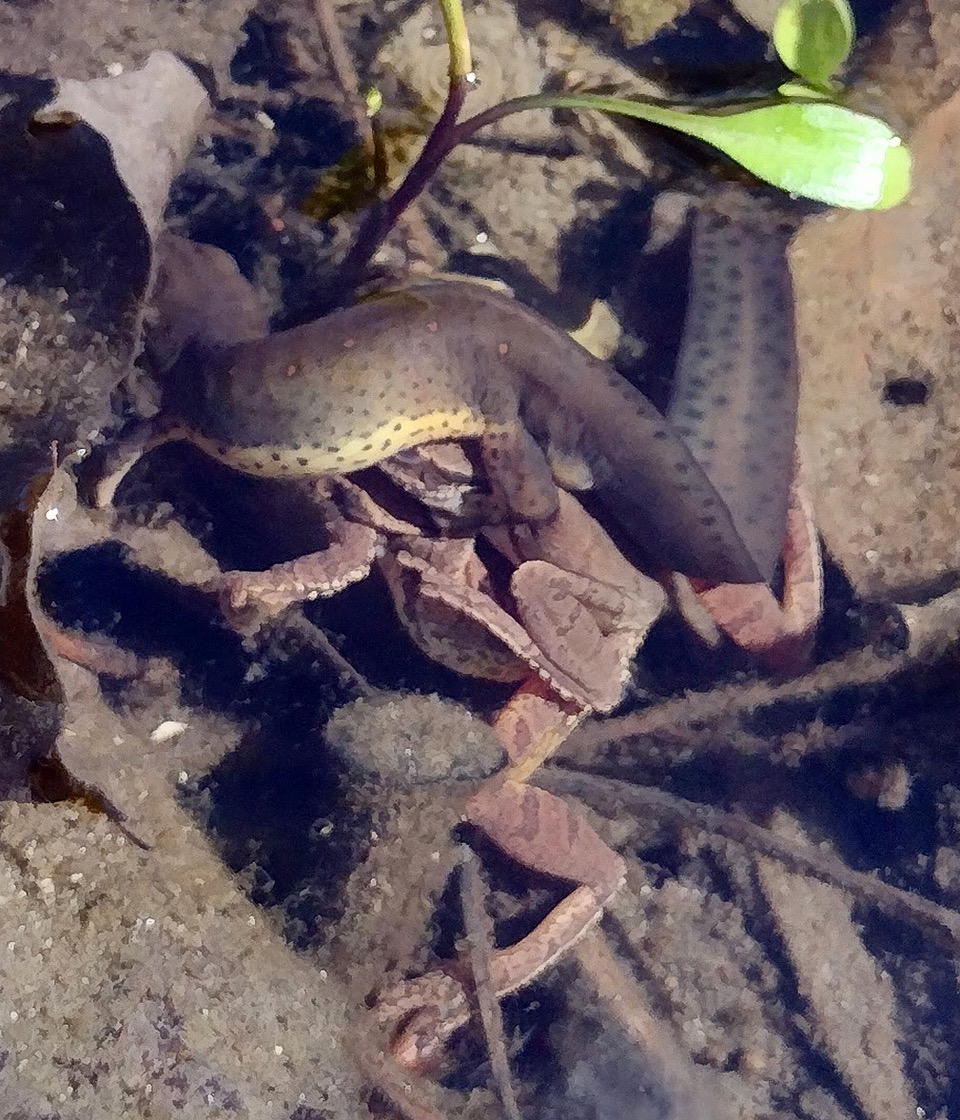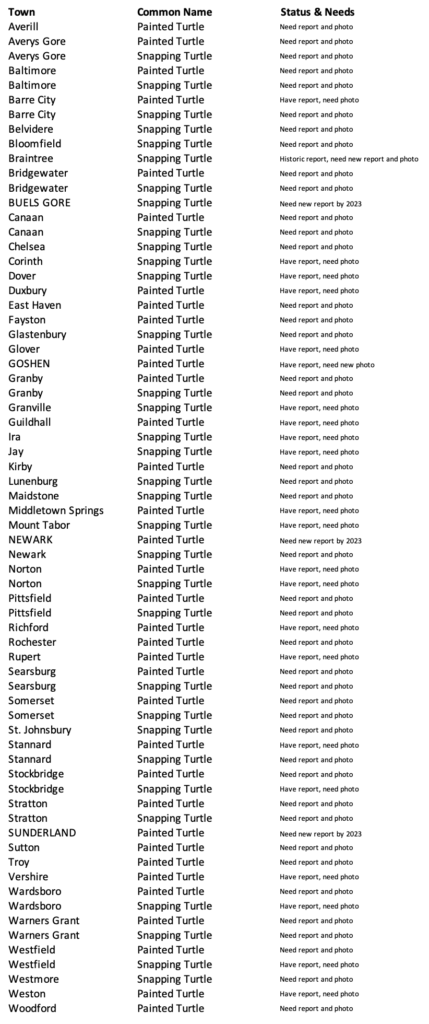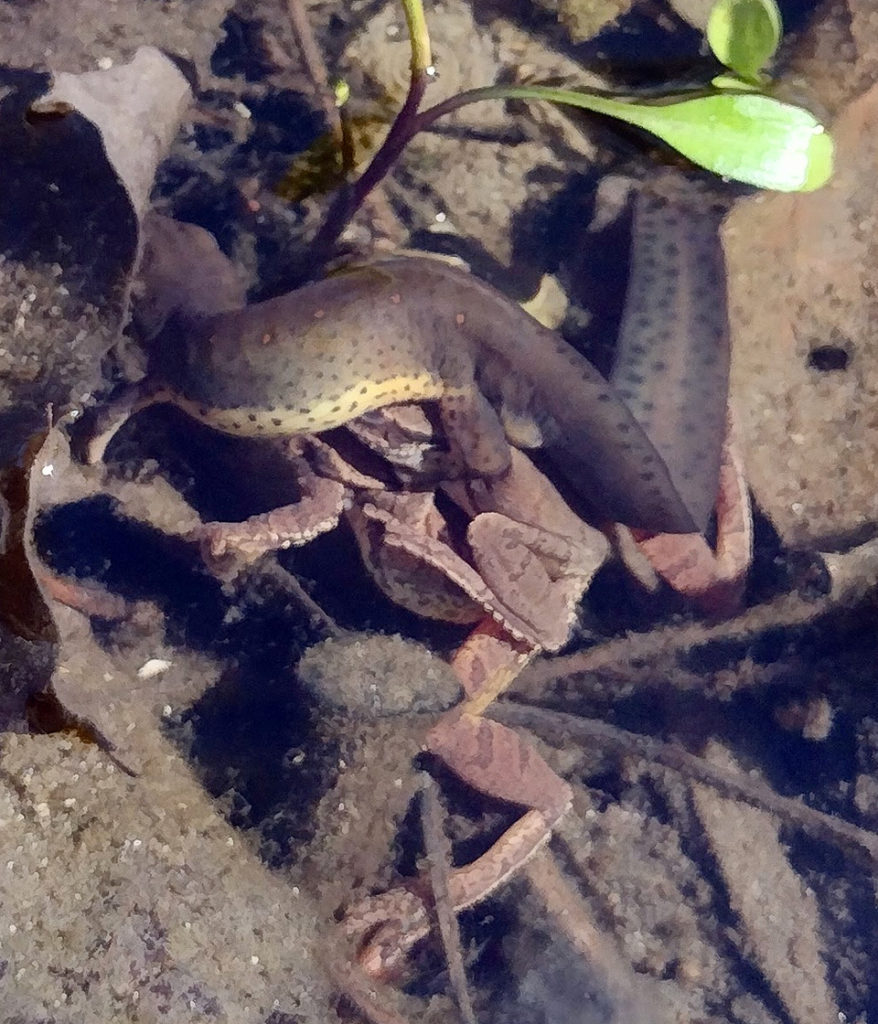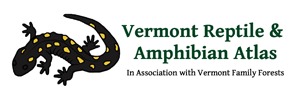
Herp Update: Current Herp Activity, Vermont Association for Wetland Science, Press–May 30, 2023
Current Herp Activity
Over the last two weeks we have received many reports of female turtles on land looking for open, sunny places to dig a nest and lay their eggs. From now through June you will be seeing many mama turtles in lawns, gardens, roadsides, or sadly, trying to get across roads. Please do help them across the road in the direction they were heading, but only if you can do it safely. Find a safe place to get off the road and park, and watch out for traffic. Don’t risk your own safety.
All of our turtles can be picked up and moved off the road, but remember that Snapping Turtles have a strong and dangerous bite. They can extend their necks a distance that is only a bit less than the length of their entire shell. You can pick them up and move them safely by grabbing them by the base of their hind legs, with their head pointed away from your body. Don’t pick adult Snapping Turtles up by their tail. Their tail can not fully support their weight and you may do spinal damage. Their tails will support part of their weight, so you can use their tail to get them into position while they are still on the ground. We put together a video on our Herp Atlas YouTube channel that shows how we safely move Snapping Turtles. Check it out at:
And remember, there are many towns from which we do not have photo-documentation of either (or both) Painted Turtles and Snapping Turtles. Take a look at the attachment to see a list of those towns. We also need photos of Northern Map Turtles from Isle LaMotte and South Burlington. Please do help us fill in these gaps. Also, if you see any of our more unusual turtle species (turtles other than Painted, Snapping and Northern Map) we would love a report and photo from any town.
This is also the time of year and warm weather that gets our Gray Treefrogs calling. Gray Treefrogs are one of my favorite amphibian species. Their rounded warty appearance, their lichenate pattern, and the adhesive disks on their toe tips are quite distinctive. They appear to be missing from many higher elevation and higher latitude towns in Vermont. Please do help us determine the current distribution of this species by photographing or recording them when you hear or see them.
Lastly, we have been getting many reports of Eastern Milksnakes. Milksnakes are largely nocturnal in warmer weather and they clearly have been moving around. They are completely harmless. They will coil and even rattle when they feel threatened, but it is all a bluff. Since they can rattle, they frequently are mistaken for rattlesnakes. Eastern Milksnakes are smooth-skinned, streamlined, and don’t have a rattle. Timber Rattlesnakes are chunky, rough-skinned, and have a rattle. Timber Rattlesnakes are only known from western Rutland County and all reports of rattlesnakes from other areas of the state that we were able to check, have turned out to be Eastern Milksnakes.
Vermont Association for Wetland Science
A new organization of wetland scientists was recently started. It is called the Vermont Association of Wetland Science (VAWS). It is open to anyone. If you are interested, you can check out their webpage at:
https://www.vermontwetlandscience.org/
Herp Atlas Press
We had lots of press this spring. We did programs for Vermont Public, WCAX TV (Channel 3) and The Burlington Free Press. If you missed any and would like to see them, they are now online.
Vermont Public: https://www.vermontpublic.org/show/vermont-edition/2023-04-26/herpetologist-in-the-house-send-your-vermont-reptile-and-salamander-questions
WCAX TV: https://www.wcax.com/2023/05/02/wildlife-watch-living-with-snakes/
Burlington Free Press: https://www.burlingtonfreepress.com/embed/video/11783382002/
Interspecies romances
In addition to the list of towns from which we need Painted and Snapping Turtle reports, I have attached a photo sent in by Kathy Kinter. Look closely, it is an adult Eastern Newt amplexing a pair of Spring Peepers. Although we have seen male Wood Frogs clasping almost anything that moves in the water (see Wood Frogs in Lust), this is the first time we have seen this behavior in a male newt.



